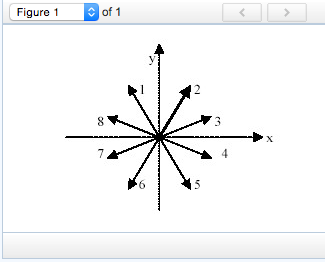PHYS1001 Chapter Notes - Chapter all: Net Force, Centripetal Force, Acceleration

Textbook notes
• Spring:
◦ Note: length needs to be in meters
• Net force: add two vectors together
• Magnitude of the change in momentum is proportional to the magnitude of
the net force applied to the object
You exert a force of magnitude 5 N on an object for one second, and observe
that the magnitude of the object's momentum decreases by 3 kg · m/s. If
instead you had exerted a force of 2.5 N on the object for one second, what
would the magnitude of the object's momentum change have been?
1.5kg.m/s
•
• Magnitude of the change in momentum is also directly proportional to the
length of time during which the force acts on the object
• Impulse=
The time interval Δt must be small enough that the net force is nearly constant
during this time interval —> The change of momentum of a system is
equal to the net impulse applied to it
• Constant force:
find more resources at oneclass.com
find more resources at oneclass.com

• Newton’s ‘universal law of gravitation’
◦ Note that since , the magnitude of the force
exerted on object 1 by object 2 is exactly the same as the
magnitude of the force exerted on object 2 by object 1
◦ If you double either of these masses, keeping the other one the
same, the force will be twice as big
◦ if you double the distance between them, the only thing that changes
is the denominator, which gets four times bigger (2 squared is
4), so the force is only 1/4 as big as before
◦
◦ The minus sign is necessary because the force on object 2 due to
object 1 is in the direction opposite to
• Force as a vector = force x unit vector position
find more resources at oneclass.com
find more resources at oneclass.com

• Centripetal acceleration: v^2/r
◦ Centripetal force: ca x mass
• Change in momentum:
ENERGY
Energy of a single particle (this is a scalar)when an object is at rest gamma = 1 so
Rest energy
• Therefore m=c^2/E- hotter objects have slightly more mass than cooler objects
• Mass and energy are the same thing, although for historical reasons we use
different units for them: mass in kilograms, energy in joules, with a
constant factor of c2 difference
Kinetic energy of a particle
• If a particle is at rest, its particle energy is just its rest energy mc2. If the
particle moves, it has not only its rest energy mc2 but also an
additional amount of energy, which we call the kinetic (motional)
energy K
Universal speed limit
• a particle can't reach the speed of light c because an infinite amount of
energy input would be required to achieve this
Low speed kinetic energy of a particle because it is travelling at a low speed
find more resources at oneclass.com
find more resources at oneclass.com



